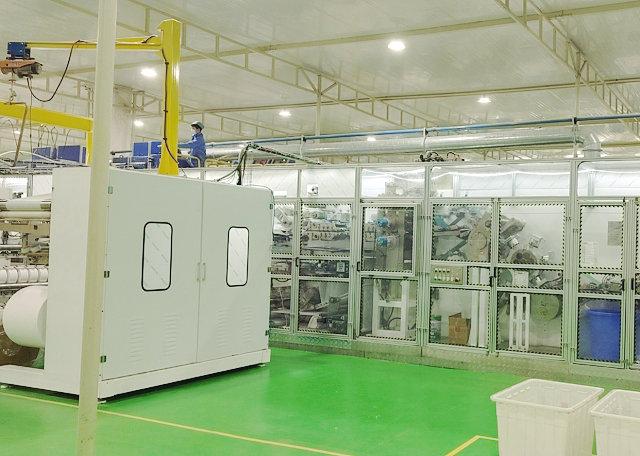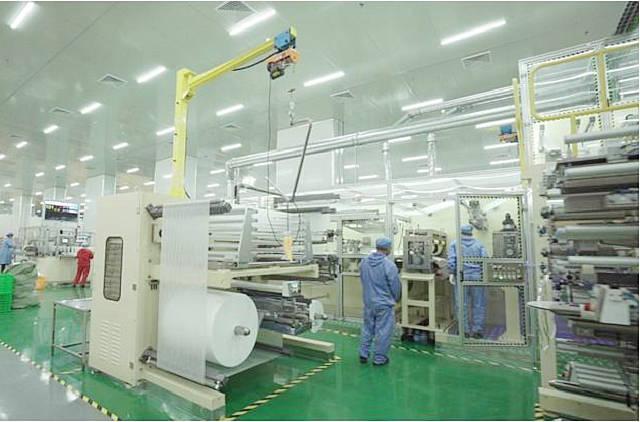Author:Haina Machinery Factory FROM:Diaper Machinery Manufacturer TIME:2024-11-14
The production of sanitary pads is essential for menstrual hygiene, but it also generates a significant amount of waste. As consumers become more aware of environmental issues, it is crucial for manufacturers to adopt sustainable practices in handling waste from sanitary pad production. This article explores effective strategies for managing waste generated during this process, highlighting the importance of sustainability and responsibility in the industry.
The first step in effectively managing waste from sanitary pad production is understanding the types of waste generated. This includes raw materials, packaging waste, and by-products from the manufacturing process. Raw materials such as cotton, plastic, and absorbent polymers are fundamental to pad production, but they can create excess waste if not managed properly. Additionally, packaging materials contribute significantly to the overall waste footprint of sanitary products. Recognizing these categories of waste is crucial for developing targeted waste management strategies.

One of the most effective approaches to handling waste is to implement waste reduction strategies within the production process. This can involve optimizing manufacturing techniques to minimize raw material usage, thereby reducing waste at the source. Techniques like lean manufacturing aim to eliminate unnecessary processes and materials, which can lead to a significant decrease in waste generation. Furthermore, using biodegradable or recyclable materials for packaging can help reduce the overall environmental impact of sanitary pads.

Recycling plays a critical role in waste management for sanitary pad production. Manufacturers can identify materials that can be recycled and establish partnerships with recycling facilities to ensure proper processing. For instance, certain plastics used in pads can be repurposed into new products. Additionally, exploring ways to reuse by-products generated during production can further mitigate waste. For example, excess cotton scraps can be repurposed for other textile applications, reducing the need for new raw materials.
Advancements in technology are providing innovative solutions for waste management in the sanitary pad industry. Companies are investing in technologies that can convert waste into energy or new raw materials. For instance, anaerobic digestion can be employed to break down organic waste, producing biogas that can be used as a renewable energy source. Similarly, pyrolysis can transform plastic waste into fuel or usable carbon products. These technologies not only help manage waste but also contribute to a circular economy by turning waste into valuable resources.
Engaging stakeholders, including suppliers, employees, and consumers, is vital for successful waste management. Manufacturers should communicate their sustainability goals and practices to all parties involved to foster a culture of responsibility. Education plays an essential role in this process—consumers should be informed about the importance of proper disposal methods for sanitary products, as well as the benefits of choosing brands that prioritize sustainability. By creating awareness, companies can encourage more environmentally friendly practices among their customers.
Adhering to environmental regulations is another critical aspect of handling waste from sanitary pad production. Manufacturers must stay informed about local and international laws regarding waste management and sustainability. Compliance not only helps avoid legal repercussions but also demonstrates a commitment to environmental stewardship. Companies that proactively engage with regulations can enhance their reputation and build trust with consumers who prioritize eco-friendly practices.
Examining case studies of companies that have successfully implemented waste management strategies can provide valuable insights. For instance, some brands have introduced take-back programs that allow consumers to return used sanitary products for proper disposal and recycling. Others have invested in research and development to create fully biodegradable pads that leave no harmful residue. These examples illustrate that it is possible to balance product efficacy with environmental responsibility.
Policy and regulation play a pivotal role in shaping waste management practices in the sanitary pad industry. Governments can encourage sustainable practices through incentives, subsidies, and regulations that promote recycling and waste reduction. Companies that align their operations with national sustainability goals can benefit from support and resources that facilitate environmental initiatives. Collaboration between industry leaders and policymakers can drive meaningful change towards a more sustainable future.

Handling waste generated from sanitary pad production requires a multifaceted approach that includes waste reduction, recycling, innovation, stakeholder engagement, and regulatory compliance. By adopting sustainable practices, manufacturers can significantly lessen their environmental impact while meeting consumer needs for quality menstrual products. The journey toward sustainability in the sanitary pad industry is ongoing, and it calls for collective effort from all stakeholders involved. By prioritizing responsible waste management, we can ensure that menstrual health products contribute to a healthier planet.
